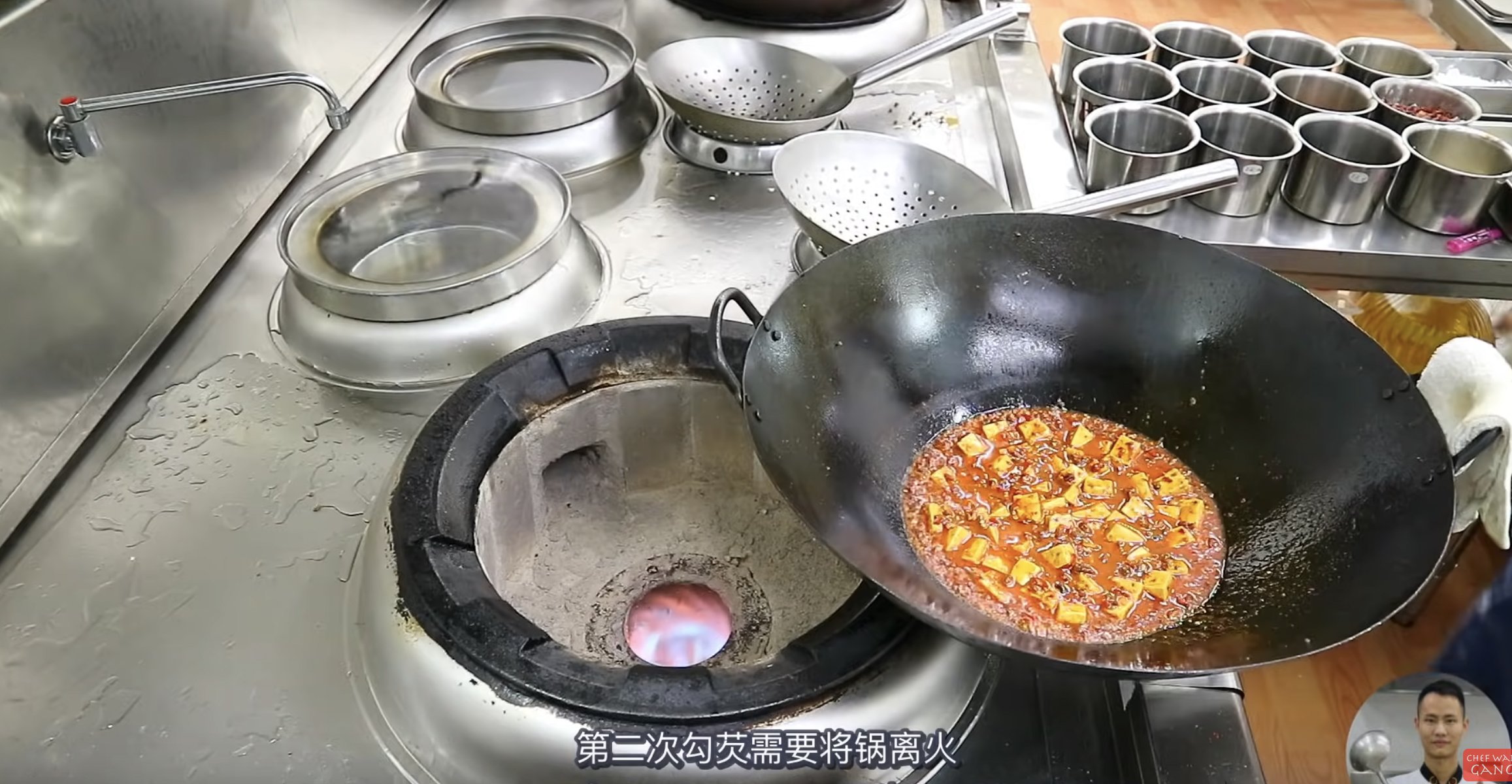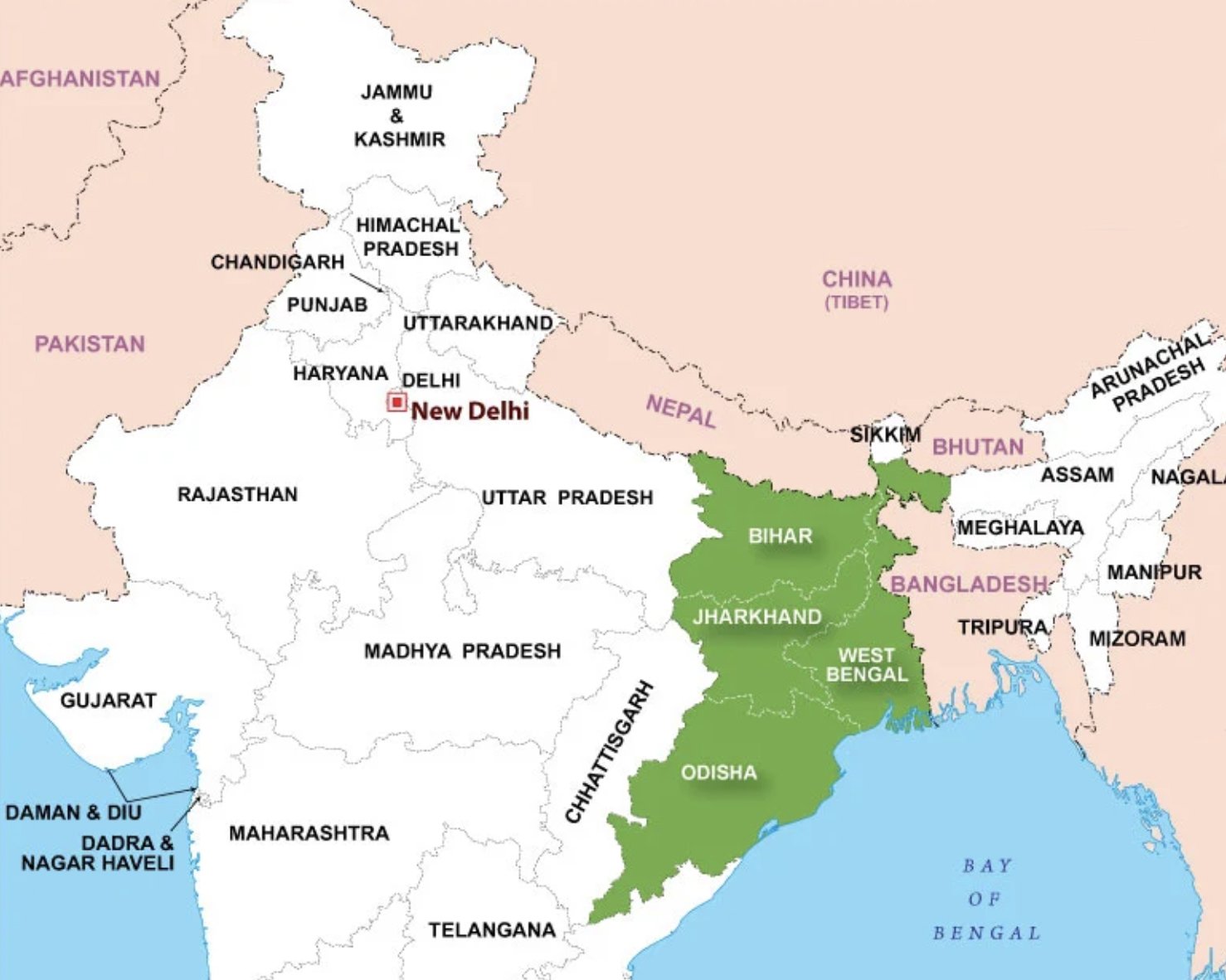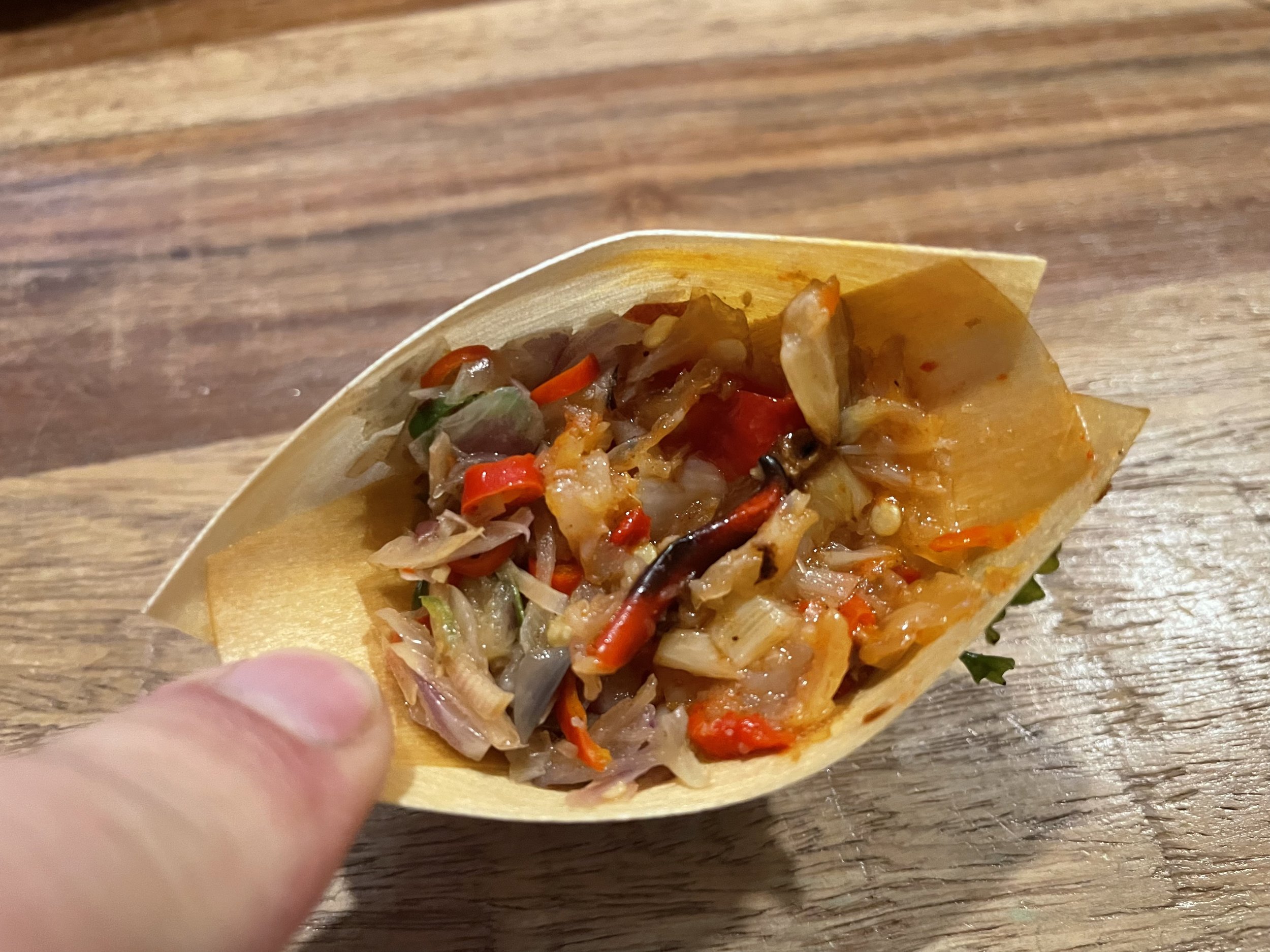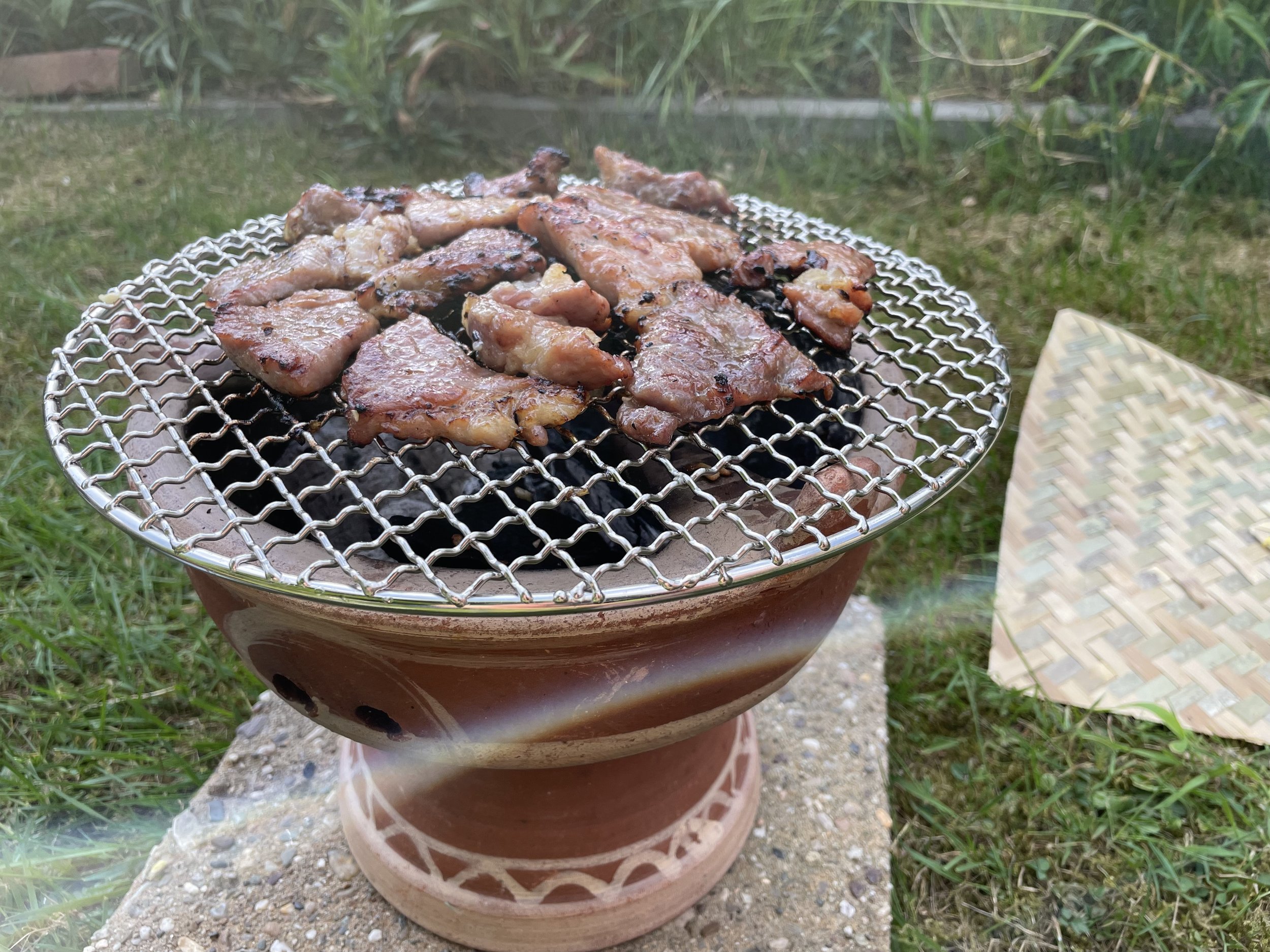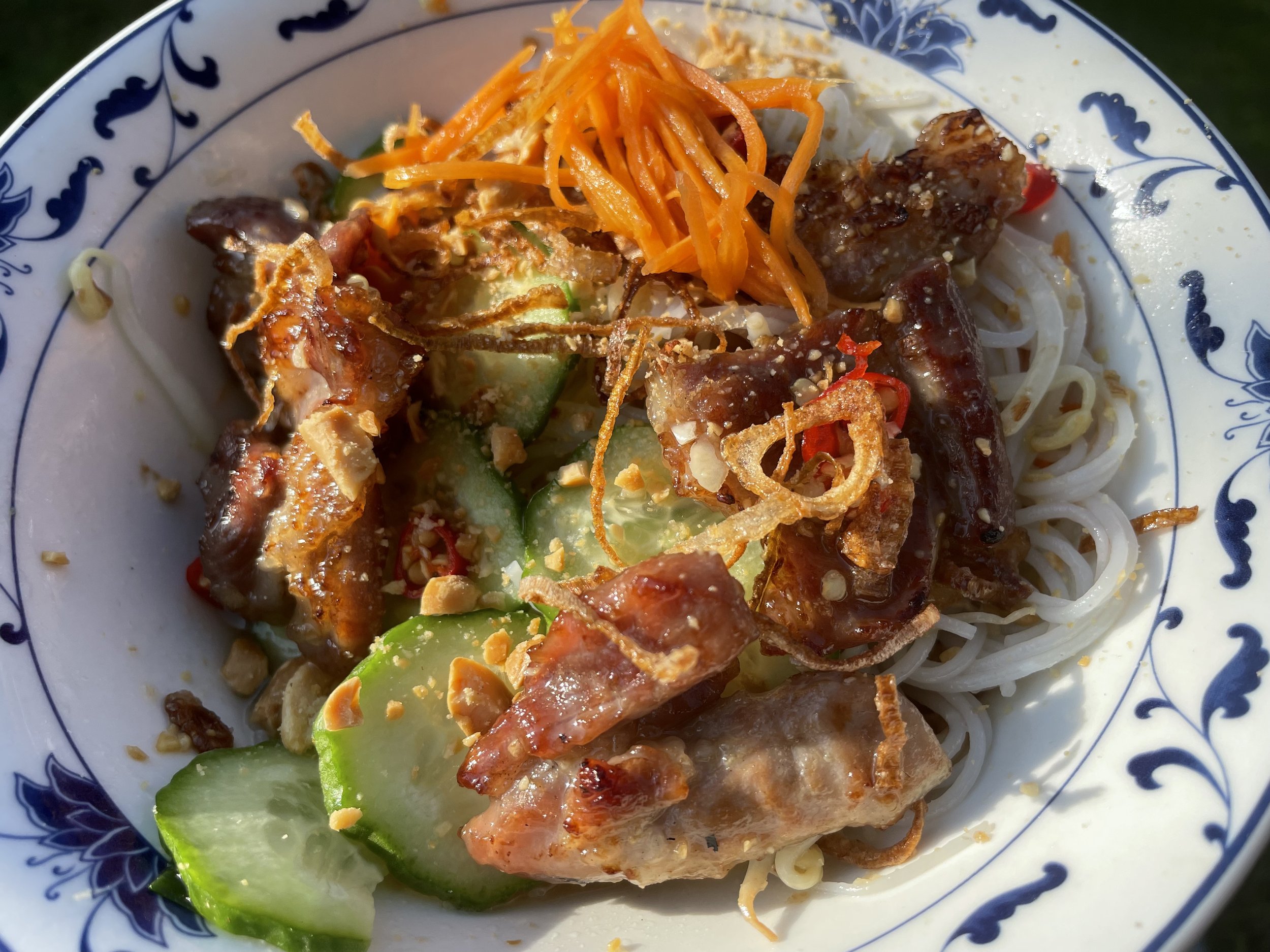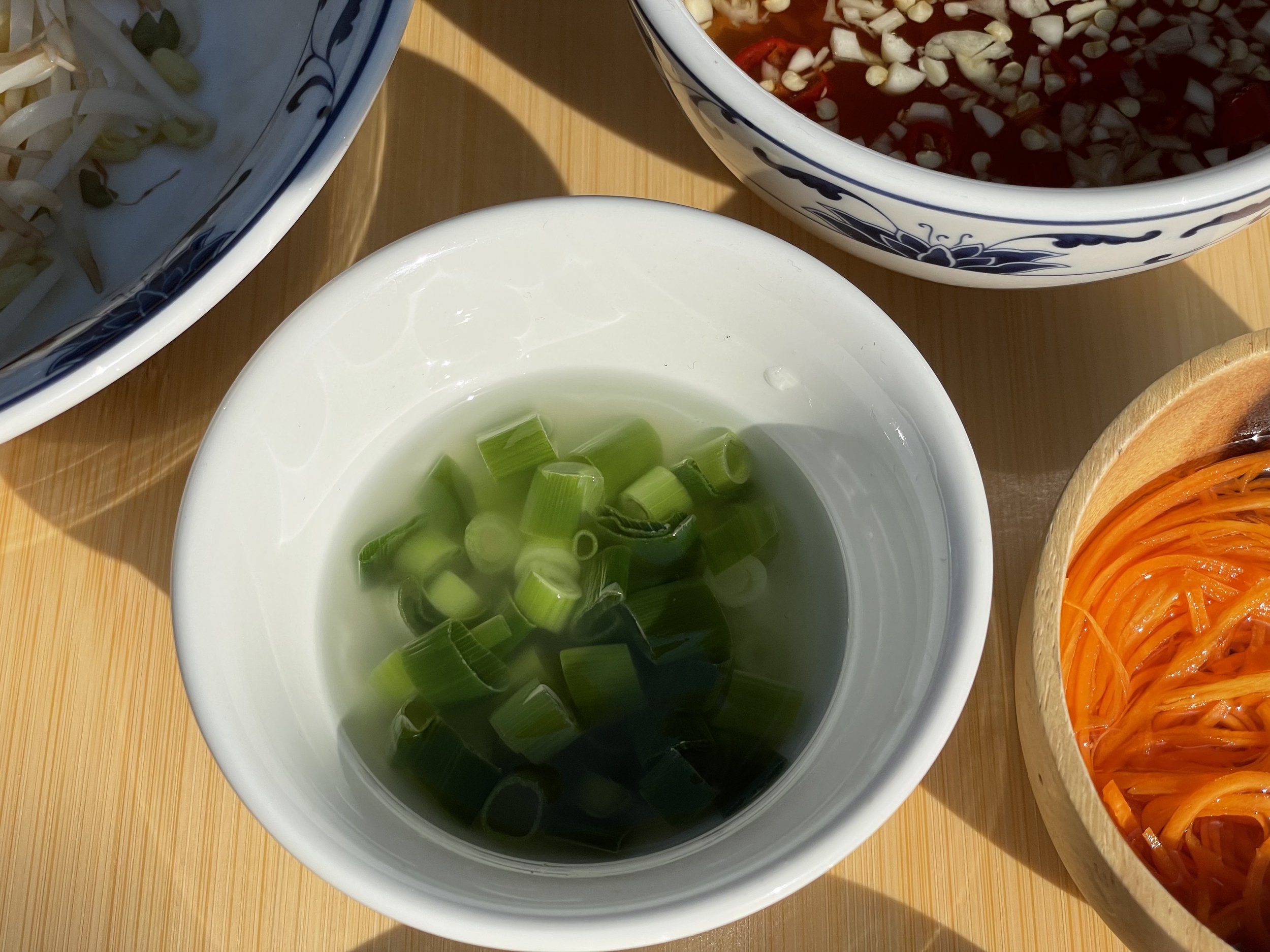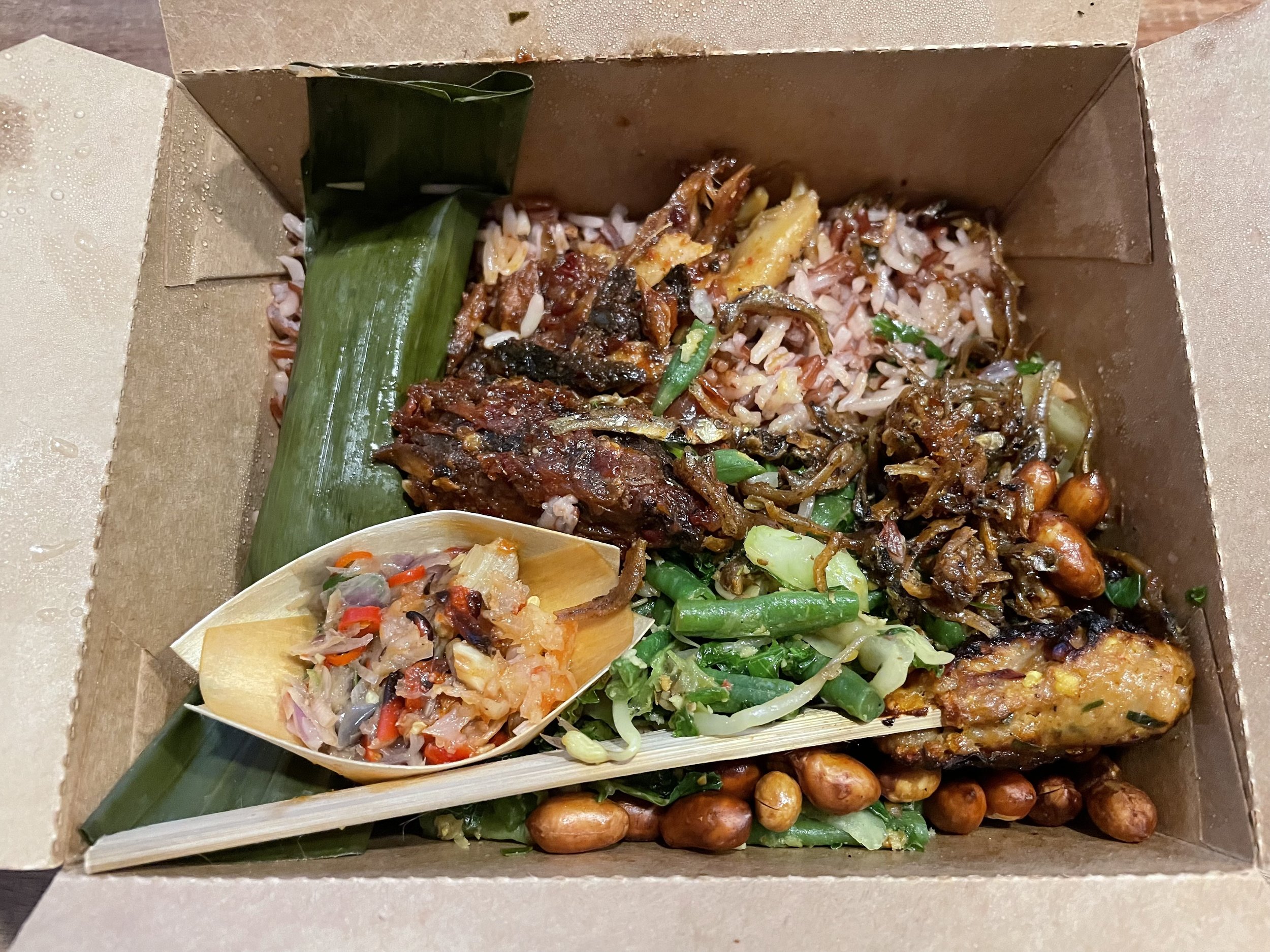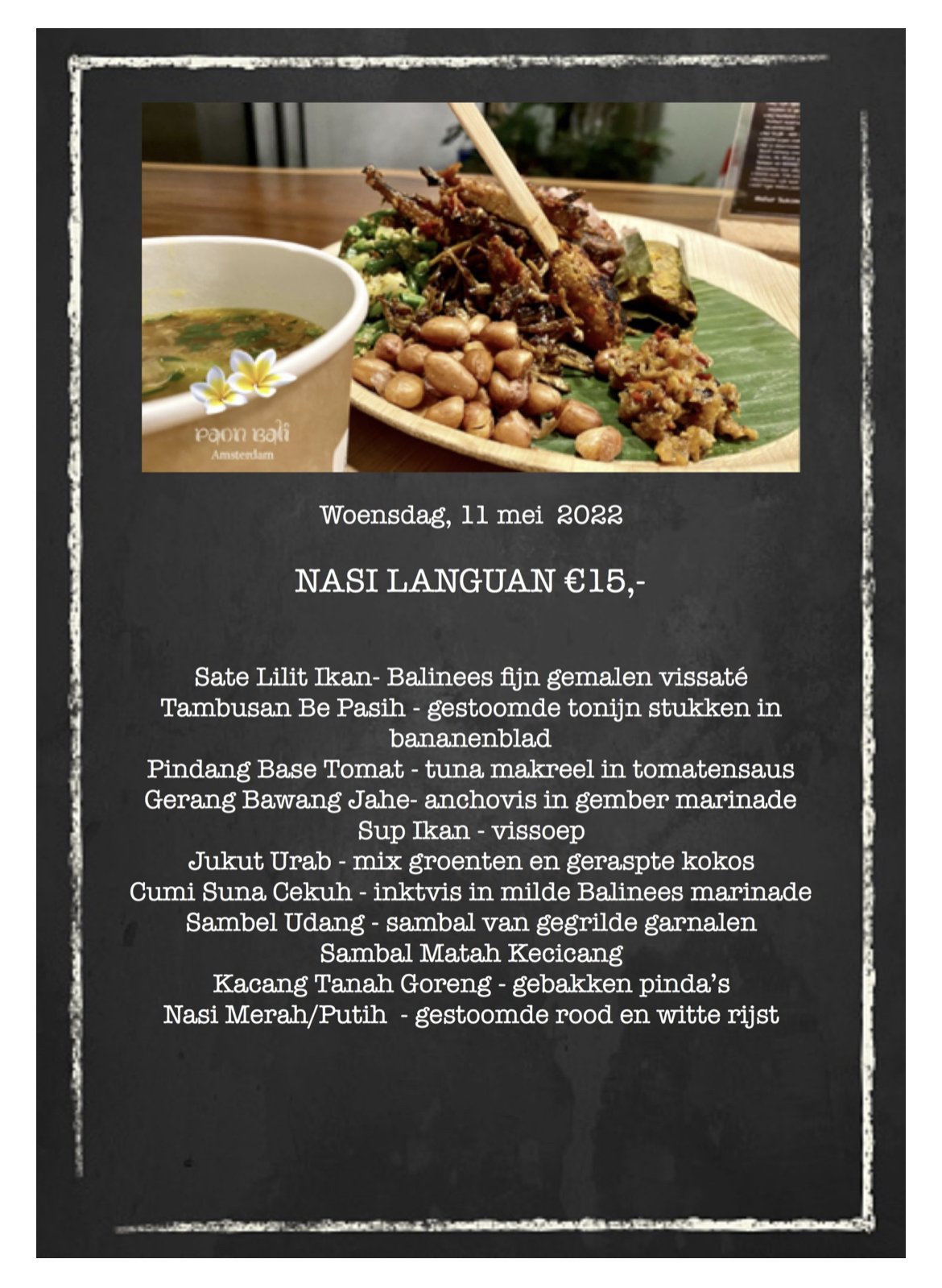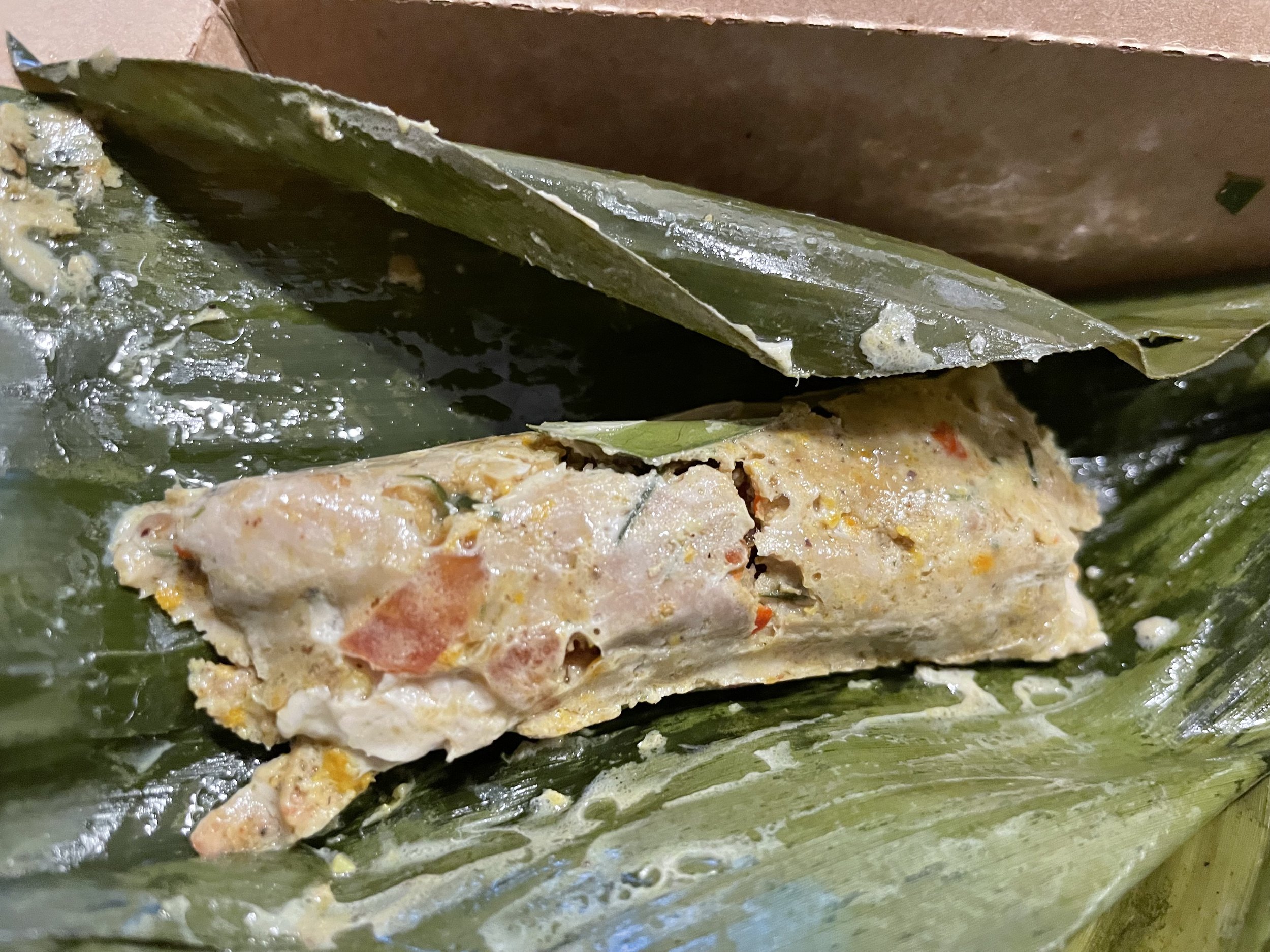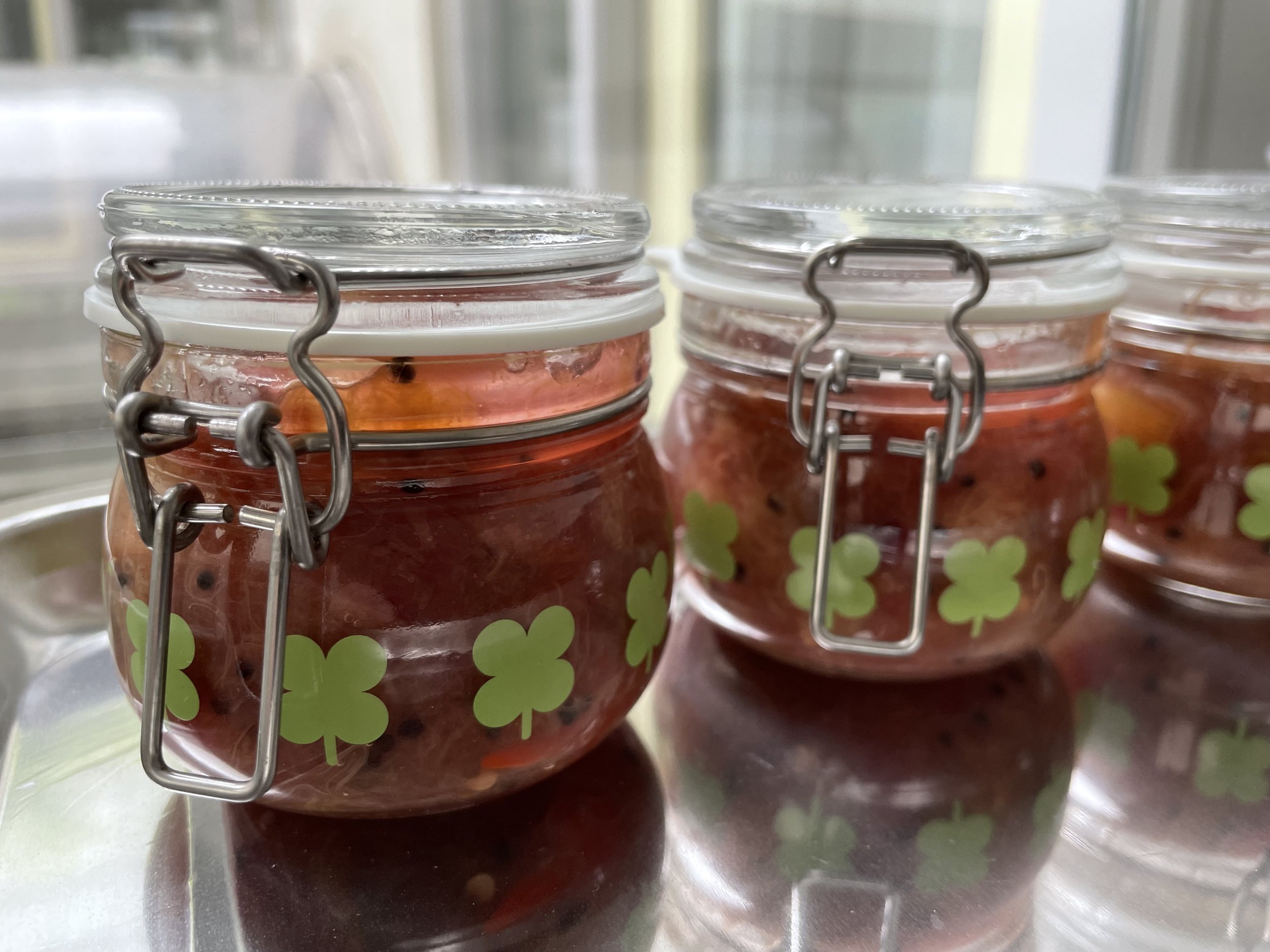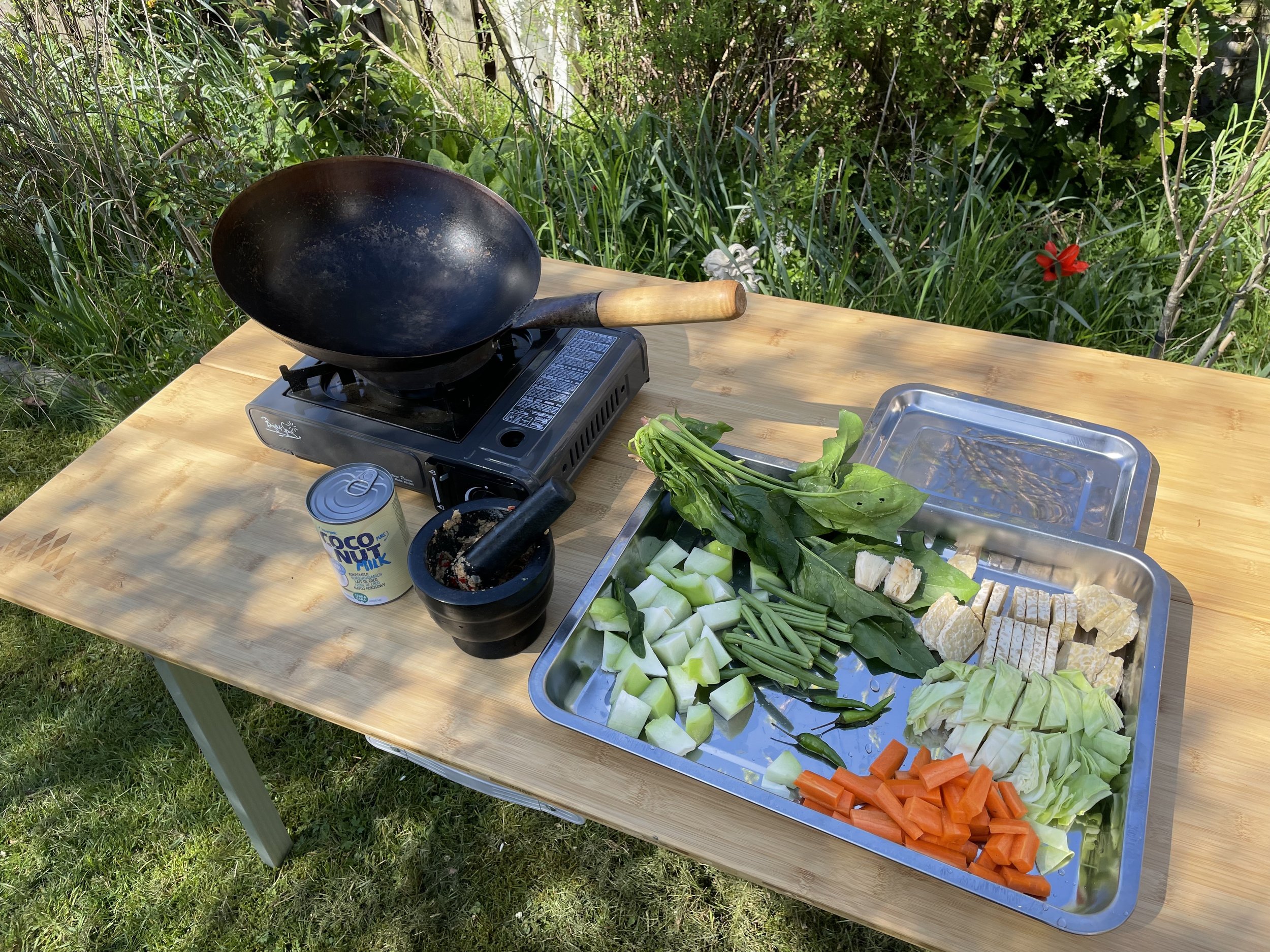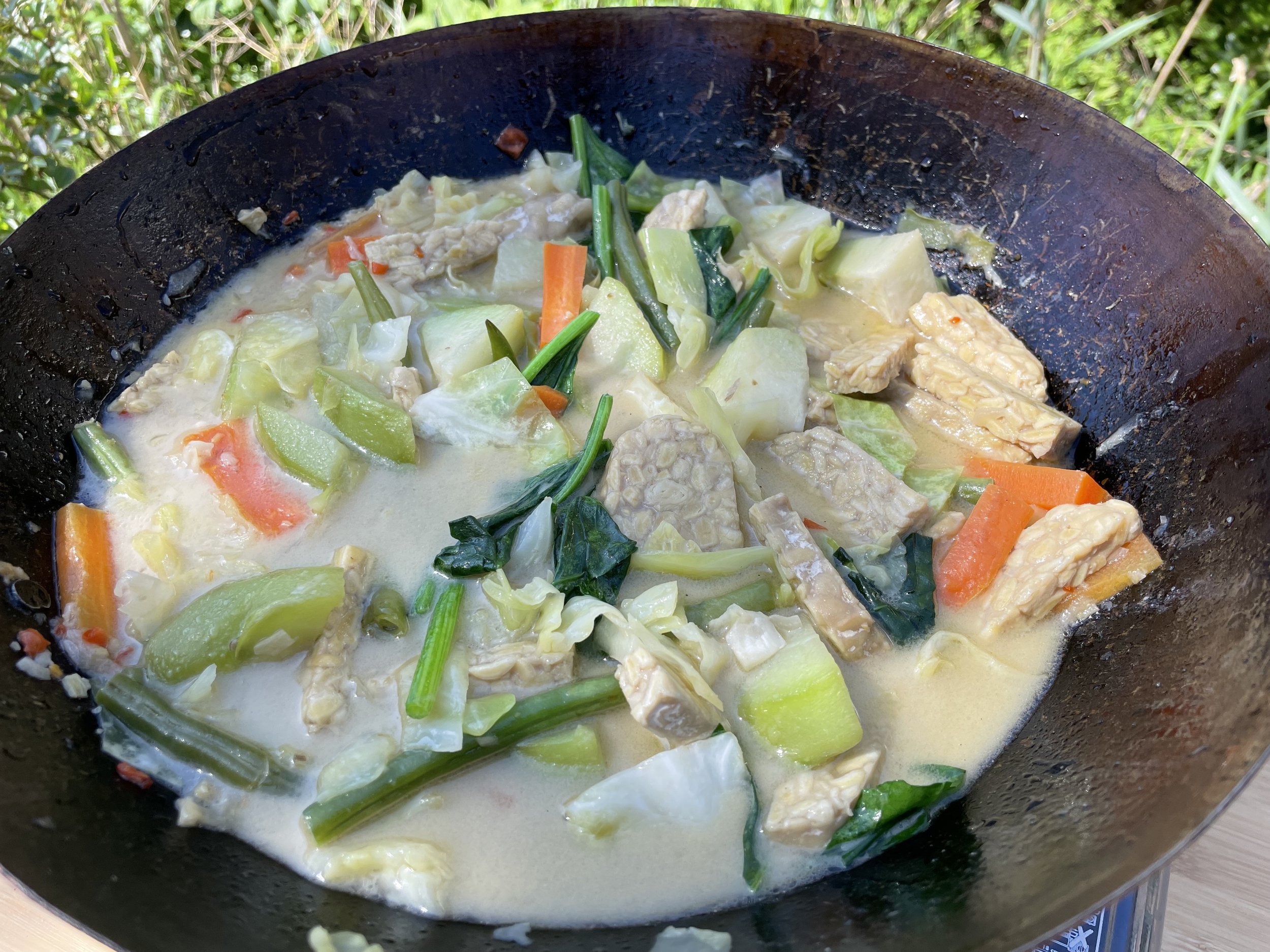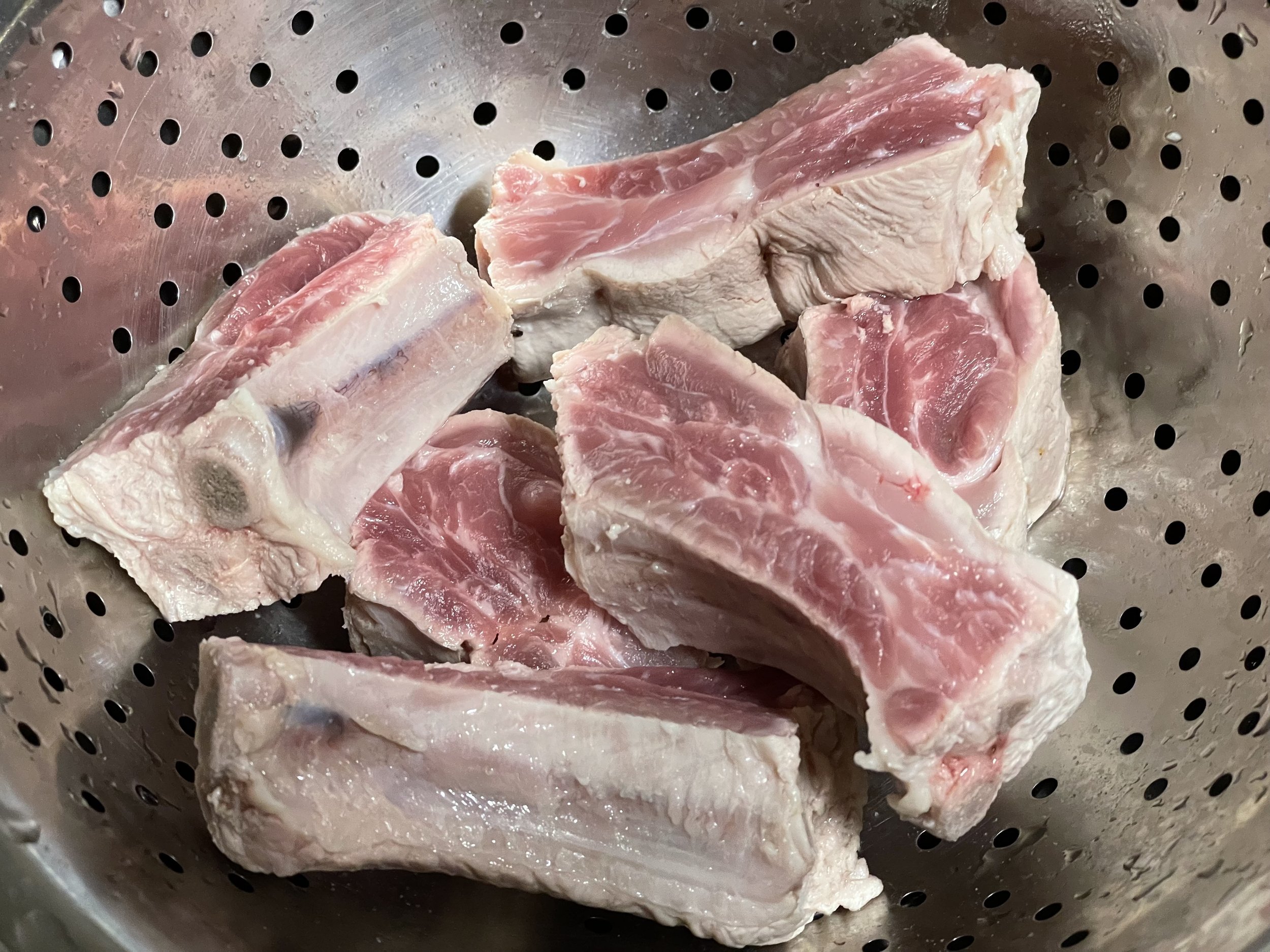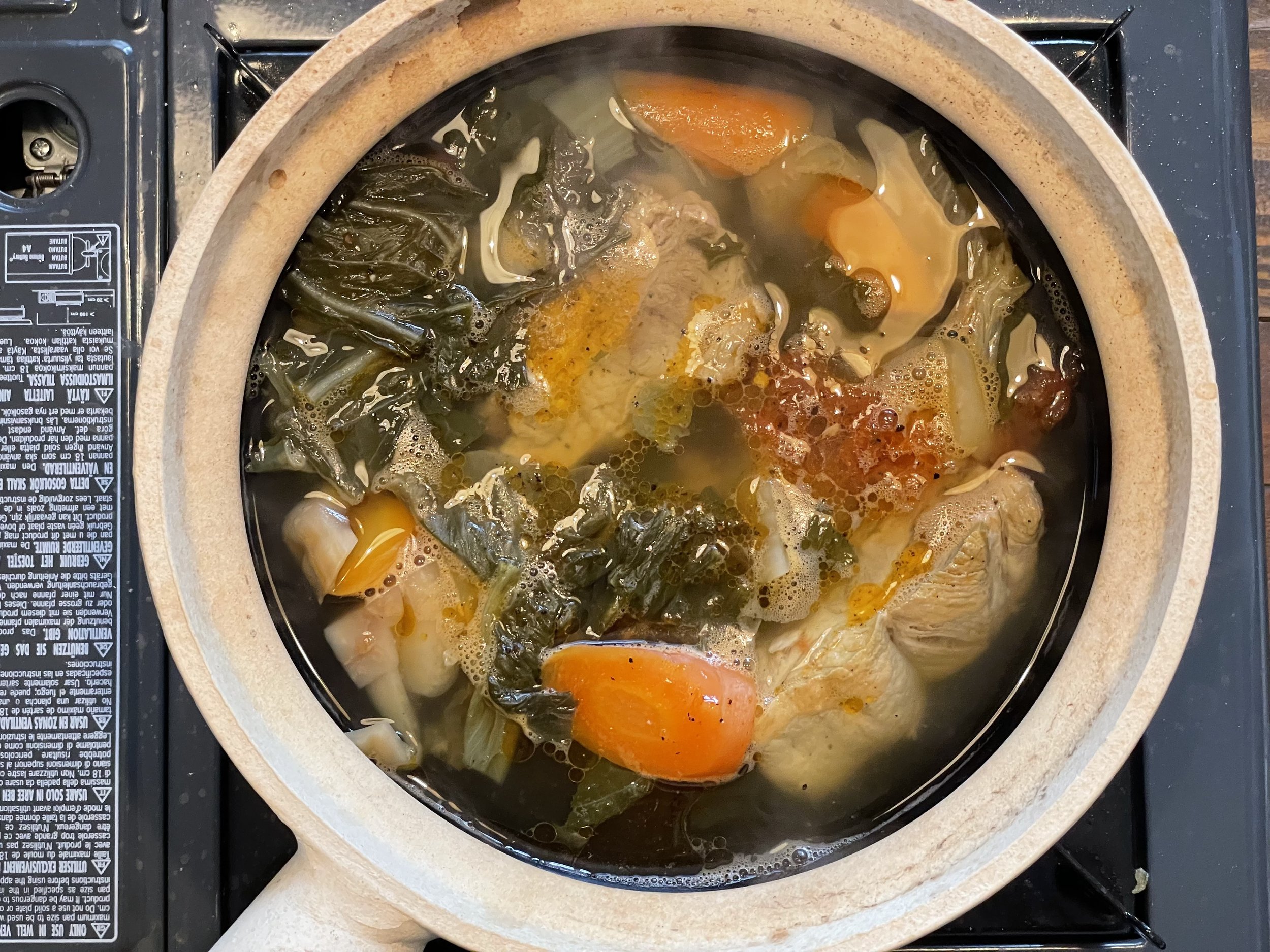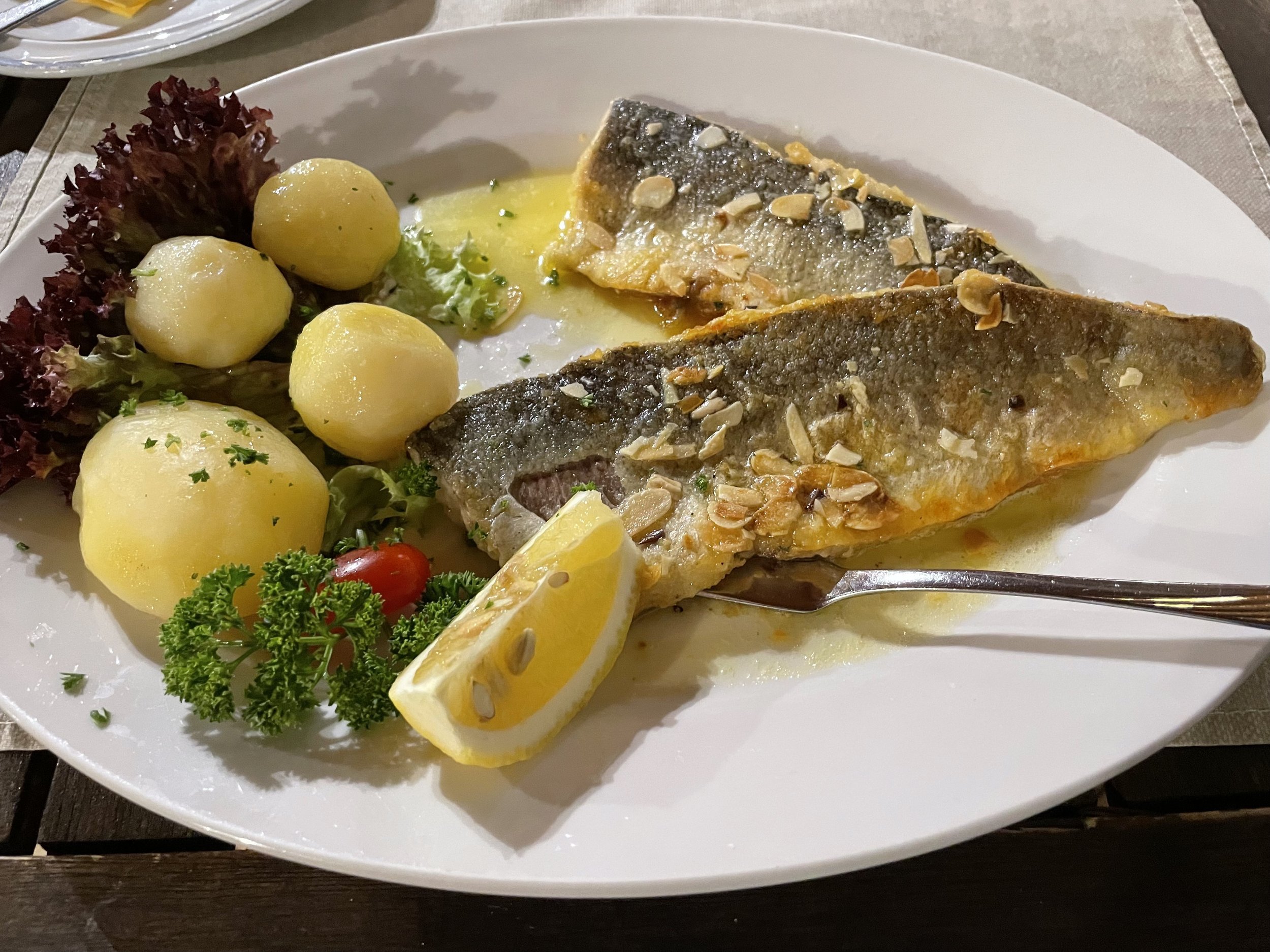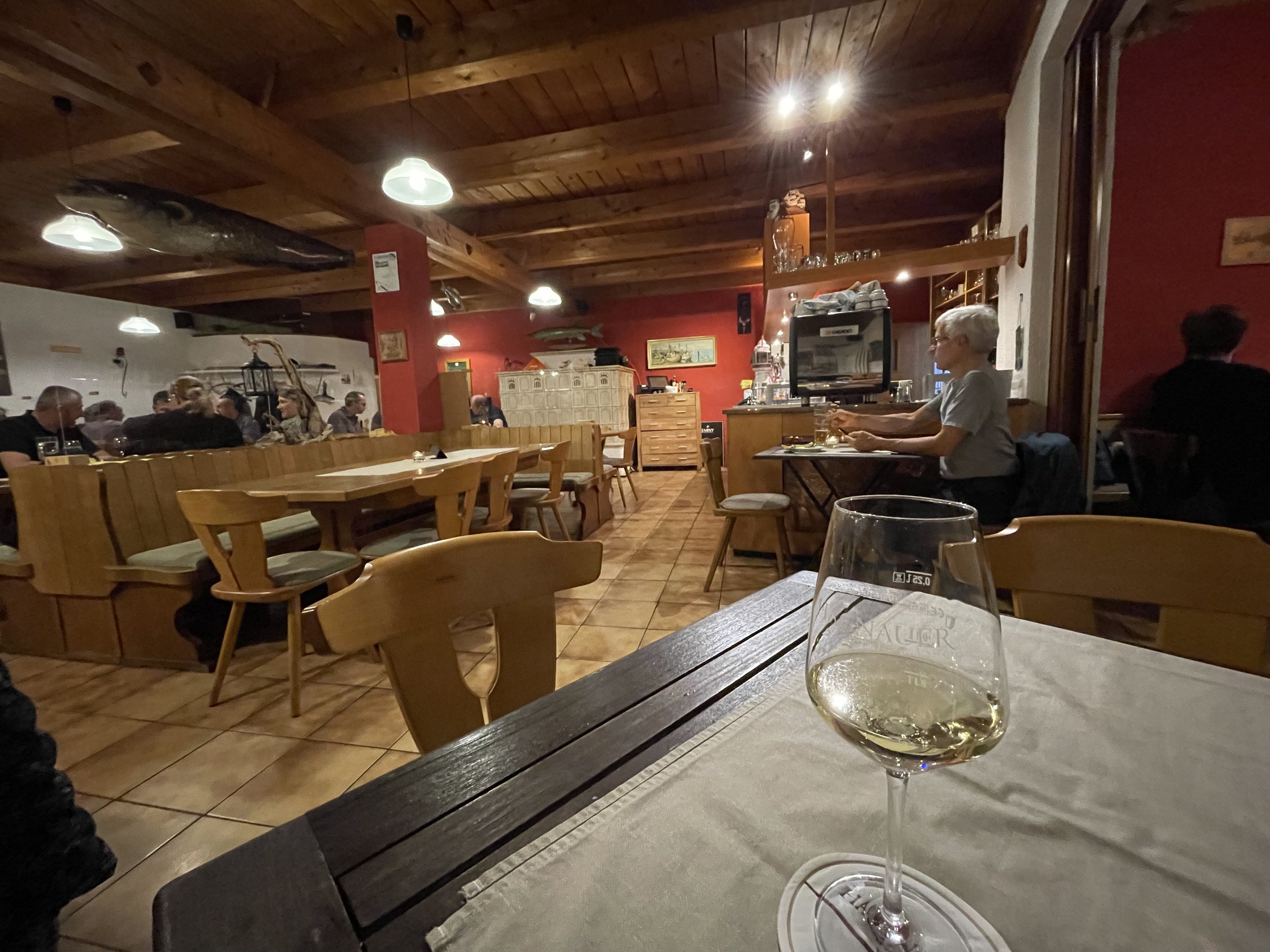Pindang
Pindang is a cooking method which consists of boiling (or steaming) in brine. It is a ‘wet’ preservation method. If a recipe calls for pindang fish, this fish is boiled/steamed in brine with tannin containing spices. A pindang fish can be fried when used in a recipe.
Fishery Industrial Research, Volume 5, Nummer 1
Pindang cabe ijo (pindang green peppers)
Take 8 small pindang fish. Fry the fish in hot oil. To prevent the oil from splattering sprinkle some flower in the hot oil. Set aside.
Chop 8 small sjalot, 2 gloves of garlic, 100 gram green chili (slice diagonally in 2 cm pieces, 4 cm galangal (smash), 3 salam leaves, 2 small tomatoes (unripe is fine), a handful of peteh beans.
Fry the onion and garlic first. Add the green chili, galangal, salam leaves and add a little water. Add salt and a little ketjap manis. Add the fish, tomatoes and peteh beans.
Serve with rice.
Pindang base lalah kas Bali
Use pindang fish, remove the head and fish bones. Fry in oil.
Make a paste using the following ingredients:
6 small red onion
5 cloves of garlic
8 small chili peppers
3 hazelnuts
1 piece kencur
1 piece turmeric
1 tomato
1 lombok
Fry the paste in oil. Add a daun leaf. Add the fried fish. Add some water and simmer. Add salt and black pepper. Simmer until the sauce is reduced.
Pepes Ikan Pindang Khas Bali
A variation on the recipe above is to make the spice paste first, without the fish. Once the spice paste is finished, take a banana leaf and wrap the pindang fish with some tablespoons spice mixture. Steam the banana leaves and finish by grilling the banana leaves over a fire.
Make a paste using the following ingredients:
18 small onions
8 cloves of garlic
2 turmeric chambers
2 segments of ginger
2 segments of kencur
5 candlenuts (toasted)
12 small chili peppers (rawit)
1 tbsp coriander
1/2 tbsp salt
4 lombok
shrimp paste
enough water
Grind to a paste, add water and simmer with a little oil. Add daun leaf and 2 sliced tomatoes. Simmer until the tomatoes are dissolved. Add black pepper powder to taste and sugar.


